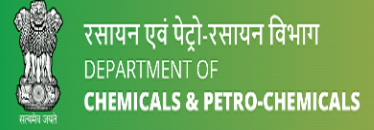Guidelines for filling-up declaration forms
Schedule 2 facilities which are declarable and how such facilities should file declarations
Which chemicals are Schedule 2 chemicals?
List of Schedule 2 chemicals are laid down in Schedule 2 of the Annex of the Chemical Weapons Convention. It is to be noted that chemicals under Schedule 2B(4), 2B(5), 2B(6), 2B(10), 2B(11), 2B(12) are families of chemicals; for this, the specific explanations as well as a list of common Schedule 2 chemicals and FAQ can be seen as a guideline.
Who should declare?
Initial and annual declarations
· Initial and annual declarations are required for plant sites that comprise one or more plant(s) which produced, processed or consumed during any of three calendar years or are anticipated to produce, process or consume in the next calendar year more than:
- 1 kg of 2A* chemical
- 100 kg of 2A chemical
- 1 tonne of 2 B chemical
· Initial declarations - the total amount of Schedule 2 chemicals produced, processed, consumed, imported and exported by the plant site in each of the three previous calendar years are required to be declared while for Annual Declaration on Past Activities (ADPA) it is for the previous year only. In other words, while filing initial declarations forms have to be filled for three previous years and for annual declarations, for only the preceding year.
· In the case of annual declarations of anticipated activities (ADAA) the total amount of Schedule 2 chemicals anticipated to be produced, processed or consumed by the plant site in the following calendar year is required to be declared..
· Form 2.0 – to be filed by the facility when making a declaration for the first time (initial declaration). Thereafter, all eight forms as detailed below have to be filed annually by the unit on or by January 31 every year. New declaring facilities have to file Form 2.0 as well as Forms 2.1 to 2.4/2.5.
Forms to be filled for initial declaration/ADPA/ADAA
Information for initial declaration and ADPA is to be given in eight forms (also see Table under “Declarations”) as follows:
· Form 2.0 Sl.No.5: Indicate the preferred address for communication.
· Form 2.0 Sl.No.11: All Schedule 2 chemicals are to be listed irrespective of volume of production, processing, consumption, export or imports.
· Form 2.0 Sl.No.12: ‘Plant’ refers to a self contained production facility or area. A plant site/factory may have several plants.
· Sl.No.13: 2A* chemical refers to chemical listed in entry A (3) of Schedule 2. 2A chemicals to entries A(1) and A(2) in schedule 2. 2B chemical refers to chemicals listed under ‘B’ of schedule 2.
· Information on aggregate quantity of Schedule 2 chemicals (along with IUPAC chemical name and CAS registry number) produced, processed, consumed, imported, exported is to be indicated in Form 2.1, for each Schedule 2 chemical separately.
· Country-wise exports/imports of Schedule 2 chemicals (along with IUPAC chemical name and CAS registry number) in Form 2.1.1, for each Schedule 2 chemical separately. For country code, see under ‘Forms and activity codes’
· Plant site information in Form 2.2 for each Schedule 2 plant separately. If the plant site comprises a plant or several plants that produce, process or consume Schedule 2 chemicals, and that produce Schedule 3 chemicals, this plant site shall be declared as a mixed plant site using Form 2.2. Verification threshold means inspection threshold - see under “Inspections” for further guidance.
· Plant information in Forms 2.3, 2.3.1 and 2.3.2 for each Schedule 2 plant separately.
· If this Schedule 2 plant also produces Schedule 3 chemicals above the declaration threshold, the plant site shall declare this mixed plant using Form 2.3. Chemical specified in subpara 8 of Article II of CWC, refers to Schedule 1 chemicals. For product group code see under ‘Forms and activity codes’
· For each declarable plant, Form 2.3.1 shall be used for the declaration of activities in relation to Schedule 2 chemical(s) and whether the declared plant is dedicated or multipurpose. Codes are to be given for other activities. The production capacity, if applicable, for each declared Schedule 2 chemical (along with IUPAC name and CAS registry number) should be declared using Form 2.3.2. For definition of “Production Capacity” see “Specific Explanations”.
· Information on quantities of Schedule 2 chemical(s) (along with IUPAC name, common or trade name, structural formula, CAS registry number) produced, processed, consumed, imported, exported at the plant site is to be given in Form 2.4. For each declarable Schedule 2 chemical produced, processed or consumed at the plant site, it shall complete Form 2.4 for the Schedule 2 chemical sold or transferred off the plant site. For product group code and country code see under ‘Forms and activity codes’
· Formulations involving Schedule 2 chemicals, recycled Schedule 2 chemicals, Low concentration mixtures containing Schedule 2B and/or Schedule 3 chemical and captively used Schedule 2 chemicals, Schedule 2 chemicals consumed in waste disposal are also to be declared using all above Forms and appropriately indicating in Form 2.4. See “Specific Explanations’ for guidance.
· In the case of annual declarations on anticipated activities, five forms (see Table under “Declarations” are to filled. The time periods shall be declared using Form 2.5. The time periods of the activities that are anticipated to occur should be as precise as possible, but should in any case be accurate to within a 3-month period. For product group code and country code see under ‘Forms and activity codes’
· Plant site code wherever mentioned in the above forms need not be filled; it will be assigned by Department of Chemicals.
· Latitude, longitude wherever mentioned in the above forms need not be filled in.
· Details of exports and imports of Schedule 2 chemicals are to be filled in Form 5.1.
· Form 5.1 at S.No. 3(i) the trade name or IUPAC name of chemical be given.
· Form 5.1 at S.No. 3(ii), its entry number of Schedule 2 chemical given as per schedule list be given.
· Form 5.1 The total of export and import at S.No. 4 and 5 should tally with the total of S.No. 6 and 7 respectively
· Form 5.1 at S.No. 6 and 7, all export and import transactions are to be listed for the calendar year
· For those filing Form 5.0, address at S.No.2 is the address for communication and at S.No. 3, Exporter/ Importer means those who export/import Schedule 2 and Schedule 3 chemicals but do not produce them.
· For “Additionally Planned Activities” forms and “Amendment Forms”, see Table under “Declarations”
Timelines for submission of forms
· See Table under “Declarations”
Consequences of declaration
· The declarations submitted by the plant site have to be filed at the OPCW by the National Authority as per obligations under the Chemical Weapons Convention, before the deadline of March 31st each year in case of initial declarations and ADPA and before 1st November each year in case of ADAA and not later than 5 days before the activity begins, in case of Additionally Planned Activities.
· The unit or facility is recognized by the Department of Chemicals and Petrochemicals and assigned a plant site code.
· Any declaring facility that produces more than 10 kg/year of Schedule 2A* chemical and/or 1 tonne/year of Schedule 2A chemical and/or 10 tonnes/year of Schedule 2B chemical shall receive an initial inspection within one year of the initial declaration and may thereafter be liable for subsequent inspection by the Inspection Team of the OPCW.
Specific Explanations
Specific explanations which relate to Schedule 2 and Schedule 3 chemicals and their related facilities
Groups (families) of alkylated chemicals as contained in the Annex on Chemicals of the Convention
· Schedule 2 chemicals which contain one carbon-phosphorus bond, the criterion for inclusion is that, irrespective of the structure of the rest of the molecule, the alkyl (Me, Et, n-Pr, i-Pr) bonded to the phosphorus is unsubstituted.
· Schedule 2 and Schedule 3 chemicals as products or intermediates
- Declarations are required from facilities producing, processing or consuming Schedule 2 or producing Schedule 3 chemicals above declaration thresholds including any product as ingredients for formulations, even if these chemicals are produced as intermediates and irrespective of whether or not they are isolated. The latter does, however, not apply to a transient intermediate, i.e. an intermediate that, while actually present in the process at some point in time and space, could not be isolated even if the process were stopped and/or the production equipment taken apart.
- Declarations in regard to processing are required from manufacturers of formulations containing Schedule 2 chemicals if the quantities of Schedule 2 chemicals exceed the declaration threshold.
- A user of such a Schedule 2 formulation will need to declare if:
- the formulation is further processed, and in that processing the total annual weight of the Schedule 2 chemical exceeds the declaration threshold; or
- the formulation is used as the starting material for subsequent production (chemical synthesis) whereby the Schedule 2 chemical contained in the formulation is converted into another chemical (consumption) and the total annual weight of the Schedule 2 chemical exceeds the declaration threshold. The weight of any other chemical in the original formulation is to be ignored.
· Products containing scheduled chemicals
- declarations of scheduled chemicals in low concentration are not required for mixtures of chemicals containing 30 percent or less of a Schedule 2B or a Schedule 3 chemical on a weight by weight basis
- Dedicated versus multipurpose Schedule 2 chemical plants
- A Schedule 2 plant is dedicated when its process configuration is dedicated to the declarable activity/ies in relation to the declared Schedule 2 chemical(s) (production/processing/ consumption).
- A Schedule 2 plant is multipurpose when the plant is designed to provide the means for the production of a variety of products by virtue of enabling more than one process configuration, i.e. the reconfiguration of the equipment and the piping as required for these different processes.
· Capacity of a multipurpose plant producing Schedule 2 chemicals
- Capacity of a multipurpose plant producing a Schedule 2 chemical is calculated by assuming that the plant would be used solely for the production of that chemical over a period of one year.
- For a multipurpose plant producing more than one Schedule 2 chemical using separate process lines, the calculated capacity for each individual chemical assumes that the plant would be used solely for the production of that chemical over a period of one year.
· Production Capacity means the annual quantitative potential for manufacturing a specific chemical based on the technological process actually used or, if the process is not yet operational, planned to be used at the relevant facility. It shall be deemed to be the nameplate capacity or, if the nameplate capacity is not available to the design capacity. The nameplate capacity is the product output under conditions optimized for maximum quantity for the production facility, as demonstrated by one or more test runs. The design capacity is the corresponding theoretically calculated product output.
· Mixed plants are plants which are individually covered under more than one Part of the Verification Annex related to Article VI of CWC. The term covers, for example, a multipurpose plant that manufactures, in the same process line but at different points in time or parallel in several process lines, Schedule 2 and Schedule 3 chemicals.
· Sub-distribution and packaging
The activities of sub-distribution and packaging are not to be considered as processing of Schedule 2 chemicals and are therefore not subject to declaration.
· Recycled Schedule 2 chemicals - Schedule 2 chemicals that are partly converted or consumed in a process and then recovered and re-introduced into the process upstream for another cycle of conversion or consumption followed by recovery. Any loss of Schedule 2 chemical from the process cycle through incomplete recovery shall be compensated for by make-up quantities (net loss).
- A plant site containing a plant in which a Schedule 2 chemical undergoes a cycle of consumption and regeneration shall make a declaration if, in total, (X plus Y) exceeds the declaration threshold where: X, expressed in the same unit as the declaration threshold, equals:
- For batch processes, the total amount of the Schedule 2 chemical charges (then consumed, regenerated and subsequently recovered in a separate process step); or
- For continuous processes, the total amount present in the reaction vessels and process streams; and Y, expressed in the same units as the declaration threshold, equals the aggregate annual compensation for the net loss of that chemical.
- The regeneration process is not required to be declared as a production of a Schedule 2 chemical in the cycle.
· Waste disposal
- A plant site containing a plant in which a Schedule 2 chemical is consumed in a waste management or disposal system in quantities above the threshold for that chemical shall declare this consumption
Guidelines for filing declarations
Schedule 3 Facilities
Schedule 3 facilities which are declarable and how such facilities should file declarations
Which chemicals are Schedule 3 chemicals?
List of 17 Schedule 3 chemicals are laid down in Schedule 3 of the Annex of the Chemical Weapons Convention .
Who should declare?
Initial annual declarations
· Initial and annual declarations (ADPA) shall be provided by plant sites that comprise one or more plant(s) which produced during the previous calendar year or are anticipated to produce in the next calendar year (ADAA) more than 30 tonnes of a Schedule 3 chemical.
· Form 3.0 – to be filed by the facility when making a declaration for the first time (initial declaration). Thereafter, all six forms as detailed below for ADPA/ADAA have to be filed annually by the unit on or by January 31 every year. New declaring facilities have to file Form 3.0 as well as Forms 3.1 to 3.4. Also see Table under “Declarations”.
Forms to be filled for initial declaration/ADPA/ADAA
Information for initial declaration and ADPA is to be given in six forms (see Table under “Declarations” ) for the previous calendar year as follows:
· Form 3.0 - Indicate your preferred address of communication at Sl. No.5.
· Form 3.0 at Sl.No.11, the chemicals name may be IUPAC name or common trade name. All Schedule 3 chemicals are to be listed even if their production/exports/imports are less than 30 tonnes.
· Form 3.0 at Sl.No.12, ‘plant’ means a self contained production facility or area. A plant site (factory) may have several plants.
· Information on aggregate quantity of Schedule 3 chemicals (along with IUPAC chemical name and CAS registry number) produced, imported, exported is to be filled in Form 3.1, for each Schedule 3 chemical separately
· Country-wise exports/imports of Schedule 3 chemicals (along with IUPAC chemical name and CAS registry number) in Form 3.1.1, for each Schedule 3 chemical separately. For country code see under ‘Forms and activity codes’
· Plant site information in Form 3.2 for each Schedule 3 plant separately.
· If the plant site comprises one plant or several plants that produce Schedule 3 chemicals and that produce, process or consume Schedule 2 chemicals above declaration threshold, this plant site be declared as a mixed plant site using Form 3.2.
· If this Schedule 3 plant also produces, processes or consumes Schedule 2 chemical(s) above the declaration threshold, this mixed plant should also have been declared under the Schedule 2 plant site declaration.
· Plant information in Forms 3.3 for each Schedule 3 plant separately. In Form 3.3 “chemical specified in subpara 8 of Article II of CWC”, refers to Schedule 1 chemical. Codes are to be used to describe main activities of the declared plant. For product group code see under ‘Forms and activity codes’
· Information on the production range and purpose of production of Schedule 3 chemical(s) (along with IUPAC name, common or trade name, structural formula, CAS registry number) at the plant site in Form 3.4, for each declarable Schedule 3 chemical produced at the plant site. For production range and purpose of production see under ‘Forms and activity codes’.
· In the case of annual declarations on anticipated activities, three forms (see Table under “Declarations”) are to filled.
· Plant site code wherever mentioned in the above forms need not be filled; it will be assigned by Department of Chemicals.
· Latitude, longitude wherever mentioned in the above forms need not be filled in.
· Detailed information on exports and imports of Schedule 3 chemicals shall be filled in Form 5.1
· Form 5.1 at S.No. 3(i) the trade name or IUPAC name of chemical be given.
· Form 5.1 at S.No. 3(ii), entry number of Schedule 3 chemical as per schedule list be indicated.
· Form 5.1 The total of export and import at S.No. 4 and 5 should tally with the total of S.No. 6 and 7 respectively
· Form 5.1 at S.No. 6 and 7, all export and import transactions are to be listed for the calendar year
· For those filing Form 5.0, address at S.No.2 is the address for communication and at S.No. 3, Exporter/ Importer means those who export/import Schedule 2 and Schedule 3 chemicals but do not produce them.
· For “Additionally Planned Activities” and “Amendment Forms”, see Table under “Declarations”
Timelines for submission of forms
· See Table under “Declarations”
Consequences of declaration
· The declarations submitted by the plant site are filed at the OPCW by the National Authority as per obligations under the Chemical Weapons Convention, before the deadline of March 31st each year in case of initial declarations and ADPA and befor 1st November each year in case of ADAA and at least five days before in case of Additionally Planned Activities.
· The unit or facility is recognized by the Department of Chemicals and Petrochemicals and assigned a plant site code
· Any declaring facility that produces more than 200 tonnes of Schedule 3 chemicals may be liable to inspection by an Inspection Team of the OPCW.
Guidelines for filing declarations
Other Chemical Production facilities (OCPF)
DOC/PSF which are declarable and how such facilities should file OCPF declarations
· A DOC/PSF facility which produces by synthesis more than 200 tonnes of one or more Discrete Organic Chemicals per annum and/or more than 30 tonnes of one or more PSF chemicals per annum
· Declarations are to be filed in Form 4.0 and Form 4.1 (also see Table under “Declarations)
· Form 4.0 - to be filed by the facility when making a declaration for the first time. Thereafter, Form 4.1 has to be filed annually by the unit on or by January 31 every year. Form 4.1 refers to the activities of the previous calendar year.
· New declaring facilities are to file both Forms 4.0 and 4.1
How to Fill Form 4.0
· Sl. Nos. 1 to 3,6,10, 11 are self explanatory
· Sl.No.4 - both official and residential telephone numbers and mobile numbers of the contact persons should be indicated.
· Sl.No.5 - indicate your preferential address for purposes of communications. It may be either of those mentioned at Sl.No.2 or 3.
· Sl.No. 7 – three major products manufactured be indicated
· Sl.No. 8 – products which are DOC chemicals are to be listed under the heading “DOC chemicals” whose annual production is more than 200 metric tonnes and under heading “PSF chemicals”, those PSF chemicals whose annual production is more than 30 metric tonnes
· Sl.No.9 - plant refers to a production facility in the plant site; a plant site may have more than one plant. Number of DOC plants and PSF plants are to be indicated separately along with annual aggregate production for the latest calendar year
· Sl.No.12 - give the name of the National level Chemical Industry Association or Council of which you are a Member.
How to Fill Form 4.1
· Plant site code need not be filled; it will be assigned by Department of Chemicals.
· Name and complete address of the plant site, name of the owner, company or enterprise operating the plant site may be indicated
· Latitude and Longitude need not be mentioned.
· Product group codes may be used to indicate main activities of the plant. In case of more than one main activity, more than one code can be indicated. For product group code see under ‘Forms and activity codes’
· For plant sites producing more than 200 tonnes of DOC chemicals, production range codes may be used to indicate aggregate production of discrete organic chemicals and number of DOC plants plus PSF plants at the plant site is also to be indicated. For production range see under ‘Forms and activity codes’
· For plant sites comprising one or more plants producing more than 30 tonnes of PSF chemical, number of only PSF plants is to be indicated and indicate with tick mark whether this plant site has produced more than 200 tonnes of PSF chemical in the previous calendar year.
· Under “Aggregate amount of production of PSF chemicals produced by each PSF plant”, the number of PSF plants with annual aggregate production in the four ranges viz. <200 tonnes, 200-1000 tonnes, 1000 to 10,000 tonnes and >10,000 tonnes of PSF, is to be indicated
· “Chemical specified in subpara 8 of Article II of CWC”, refers to Schedule 1 chemical.
· For amendments to be made in Forms 4.0 and 4.1 see Table under “declarations”.
Timelines for submission of forms
· See Table under “Declarations”
Consequences of declaration
· The declarations submitted by the plant site is filed at the OPCW by the National Authority as per obligations under the Chemical Weapons Convention, before the deadline of March 31st each year in case of initial declarations and ADPA.
· The unit or facility is recognized by the Department of Chemicals and Petrochemicals and assigned a plant site code
· All the declaring facilities that produce more than 200 tonnes of DOC/PSF chemicals may be liable to inspection by an Inspection Team of the OPCW. Usually for OCPF facility such an inspection is likely to take place not more than once in ten years.














